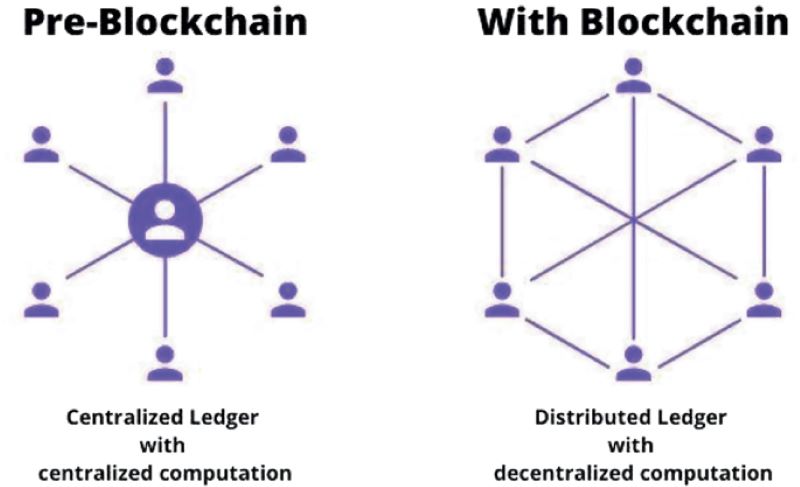What is Proof of Elapsed Time in blockchain? Let’s cut through the cloud of mystery surrounding it. Picture a digital clock, ticking away, ensuring fairness in a game where everybody’s eyes are on the prize: blockchain efficiency. My hands have tinkered under the hood of this elegant solution, carving paths through cryptographic mazes, and I’m here to guide you through its simple yet powerful core. With Proof of Elapsed Time, we unlock a vision of blockchains far more energy-savvy than their forebears, without sacrificing an ounce of the trust or security we’ve come to demand. Dive in as we dissect this intriguing piece of blockchain technology, designed to keep our digital ledger ticking like clockwork.
Understanding the Basics of Proof of Elapsed Time (PoET)
The Role of PoET in Blockchain Consensus Algorithms
In our blockchain world, PoET is key. It stands for Proof of Elapsed Time. It’s like a fair game for picking who adds the next block. In this race, no one can cheat. Everyone waits their turn. It’s a wait-and-win lottery. With it, blockchains stay honest and play fair. It’s used in the Intel Sawtooth platform.
PoET is clever. It works inside a trusted part of your computer. This part is called a trusted execution environment. It acts like a safe space. Here, no bad guys can mess with the system. PoET uses this to make sure no one cuts in line. Everyone waits the right amount of time. It’s secure and keeps energy use low.
How Cryptographic Timers Power the PoET Mechanism
Now, let’s talk about timers. In PoET, timers are a big deal. They use math to make sure everyone waits. It’s like a stopwatch that can’t be rushed. When your time’s up, you get a chance to add a block. But only if your number comes up first. It’s like a raffle where everyone gets a ticket. But you can’t buy your way to win.
These cryptographic timers decide wait times. To make it fair, they give random wait times. This is key for the whole system. Imagine if a school race let kids start at different times. But no one knows when. That’s PoET for you – fair and square. No one gets left out or jumps ahead. All thanks to these fancy timers.
In essence, PoET is a smart way to keep computers in a blockchain behaving. It helps a lot with energy. Unlike Bitcoin’s method, it doesn’t need much power. It also fits well with the idea of permissioned ledgers. These are ledgers where not everyone can join. They’re like private clubs for data.
With PoET, blockchain stays smooth and costs less to run. It stands out by being green and lean. Cool, right? It’s key for making blockchain even better in the future.
Remember, in blockchain, we want everything to be open and work well. PoET helps with this big time. It’s all about fair play and saving energy. And when it comes to adding new pages to our digital book, PoET’s like the thoughtful librarian. It picks who’s next without any fuss or muss. It’s fair, random, and doesn’t cost an arm and a leg.
So that’s the scoop on PoET. It keeps things ticking in the right way. It’s a smart piece of tech that loves fairness and saving energy. And that’s something we can all cheer for in the digital age.
The Inner Workings of PoET on the Intel Sawtooth Platform
Integrating PoET with the Trusted Execution Environment of Intel SGX
Picture a room where only the most trusted of friends can enter. That’s like Intel SGX for blockchain. This special area keeps your blockchain safe and sound. It forms part of a chip in your computer. You can think of it as a lockbox for code. Intel SGX makes sure Snippets of blockchain code within this lockbox stay private. No one can peek.
In comes PoET, a smart way to record who gets to add to the blockchain. It needs somewhere safe to manage this. That’s where Intel SGX shines. It’s a trusted room where PoET can run. This is good because it keeps things fair and secure.
Leader Election Algorithm: Fairness and Efficiency in Sawtooth’s PoET
Have you ever picked a team captain by drawing names from a hat? This is fair as luck decides. Sawtooth’s PoET does something a bit like that for blockchains. It uses a leader election algorithm. This fancy title means it picks who adds the next block randomly. Just like pulling a name from a hat.
But here’s the cool part. Each computer running this PoET thing has a secret wait time. It’s like a secret timer. Once the timer beeps, that computer says “I’m ready!” If it’s the first to beep, it gets to add a block. All this happens in that safe room we talked about.
So, what’s a good thing about this random picking? Well, no one can cheat. It’s fair. It’s also quick. Computers don’t have to fight over who gets a turn. Each one just waits quietly. No big power-hogging race to solve tough math problems.
And here’s the key. The Sawtooth uses this system to keep things honest and even. It’s like a fair race where everyone has the same chance to win. This fairness is big for blockchains. It can help small players get a chance too. Plus, it’s green. It doesn’t need much juice to run. So it’s kind on our planet.
In a world full of complex, energy-gulping ways to keep blockchains true, PoET stands out. It invites us to rethink how we do things. Not by muscle, but by drawing straws in a trusted space. And that might just be the smarter way to go.
Evaluating PoET’s Contributions to Blockchain Technology
PoET’s Impact on Energy-Efficient Blockchain Development
The Proof of Elapsed Time (PoET) consensus mechanism is a big leap for energy-efficient blockchain. Blockchains face a tough job. They must secure transactions and create new blocks without wasting too much power. Way back, most blockchains used to gobble energy like it was going out of style. PoET changes the game by using a lottery system instead of hard math puzzles. It’s like choosing a line leader in class, but fair for all computers in the network.
With PoET, each computer, or ‘node’, in a blockchain network gets a random wait time. Think of it as a timer. When it goes off, the node gets to make a new block. This approach is softer on energy use since nodes aren’t always busy solving puzzles. They’re simply waiting their turn. This is perfect for networks wanting to cut down on their electric bill.
Achieving Byzantine Fault Tolerance with Low-Resource Consumption
Now, any strong blockchain must handle betrayal. Yes, betrayal. There might be rogue computers out there up to no good, trying to mess things up. This is what the smarty-pants call Byzantine Fault Tolerance (BFT). A blockchain with good BFT can still run smoothly even if some nodes try to throw a wrench in the works.
Combining BFT and low-resource use is tricky. Still, PoET manages to do it. Thanks to something called a trusted execution environment—picture a secret club within your computer that’s extra safe—even if nodes act fishy, PoET can keep the blockchain straight. How? It makes sure that wait times are created by a reliable source. This is Intel Sawtooth platform’s secret sauce. It blends Intel’s trusted tech, known as Intel SGX, with PoET to ensure everything is on the up and up.
Consensus protocol efficiency goes through the roof with PoET, while we don’t lose sleep over network security mechanisms. The cryptographic timer in PoET doesn’t need a ton of energy like mining does. This makes PoET not just brainy, but also green as a spring leaf. We see savings in power and money over time.
The fairness in blockchain part is crucial. Imagine if the same few nodes could write all new blocks. That wouldn’t be fair, would it? PoET levels the playing field. Every node gets a fair shot at being the block creator. They just have to wait for their timer to beep. Think of it like musical chairs, but with a twist. When the music stops, if your timer rings, you get a chair, but the chairs aren’t running out. And in the block minting process, being ‘it’ means writing a new page in the blockchain’s ledger.
To wrap it all up, PoET shows us that a ledger can be both bulletproof and not burn through watts. It’s like having your cake and eating it too, without worrying about cleaning up a mess. Blockchain scaling solutions adore this stuff because it means growing big without growing more expensive or needing too much juice. It’s real neat how a simple timer, some trust, and a sprinkle of randomness can go a long way in making blockchains smarter.
The Future of Distributed Ledger Technology with PoET
Scaling Blockchains with PoET’s Lottery-Based Consensus Model
Big question time: How can we make blockchains work for more people? Enter PoET. PoET is a new way to make sure everyone plays fair in the blockchain world. It stands for Proof of Elapsed Time and it’s part of how some blockchains reach agreements. Think of it as a lottery where computers take turns being in charge.
The cool thing about this? It doesn’t need much power. Traditional blockchains like Bitcoin use a lot of electricity because they rely on a process called mining. PoET is different. It chooses who adds the next block by picking a node that has waited long enough. This waiting time is random but fair. And it’s all timed by a special clock inside the computer, called a cryptographic timer.
So, why does this matter? Well, blockchains are growing. They need ways to handle more activity without getting too crowded. PoET helps by letting more transactions happen smoothly. It’s like adding more lanes to a highway to ease traffic. Plus, because it’s energy-efficient, we can look after our planet while growing digital economies. It’s a win-win!
Onboarding New Nodes and Enhancing Network Security with PoET
Now, we’ve got a way to grow blockchains, but what about keeping them safe? As we bring in new nodes, or computers, we have to be sure they’re secure. We don’t want any tricksters messing with our transactions. PoET plays a big role here, too.
With PoET, each new node has to prove it’s waited its turn before adding to the blockchain. This is part of the trust we build within the network. It’s like a game where everyone knows the rules and plays them right. This system comes from a trusted execution environment, or a safe space in the computer, making it tough for cheaters to get through.
What makes this so special? For one, it means businesses can trust their data on the blockchain. It also means our digital stuff, like smart contracts, runs the way it should. And because it’s energy-efficient, we keep the planet in mind as we’re building these secure systems.
In the end, PoET isn’t just another tech thing. It’s a way to grow and protect our digital world that’s fair and easy on the environment. It lets more people and businesses dive into blockchain without slowing down or harming the Earth. That’s the kind of future we’re working toward, and PoET is helping us get there.
In this post, we dove into the Proof of Elapsed Time, or PoET, and how it helps blockchains make decisions fairly. We looked at its role in agreement methods and saw how clever timers make PoET work. Then, we explored how Intel Sawtooth uses PoET to pick leaders while keeping things fair and running smooth.
We also checked out PoET’s good points, like saving energy and handling hiccups without needing lots of power. Finally, we imagined a future where blockchains grow big and stay safe, thanks to PoET’s smart lottery system and how it welcomes new parts to the network.
I think PoET’s a smart way to run blockchains better. It’s cool how it doesn’t waste energy and still keeps things tight. It sure looks like PoET’s set to help blockchains do more in the future. And that’s a big deal for everyone using this tech.
Q&A :
What is Proof of Elapsed Time (PoET) in blockchain technology?
Proof of Elapsed Time, or PoET, is a consensus mechanism used in blockchain networks to ensure the fair and random selection of the next block creator without the high energy costs associated with some other methods. It utilizes a lottery system where each participating node in the network must wait for a randomly assigned time period to expire before it is eligible to add a new block to the chain.
How does Proof of Elapsed Time differ from Proof of Work?
Unlike Proof of Work (PoW), which requires computational power to solve complex math puzzles, Proof of Elapsed Time assigns a random wait time to each node. It significantly reduces the amount of energy consumed, as nodes are not competing using computational power but are instead waiting for their timer to expire.
Is Proof of Elapsed Time more energy-efficient than traditional consensus mechanisms?
Yes, PoET is generally considered to be more energy-efficient than traditional consensus mechanisms like PoW. Since it doesn’t require extensive use of computational resources and hinges on a simple timing mechanism, PoET can maintain network security and decentralization without the associated high energy costs.
Can any blockchain implement the Proof of Elapsed Time mechanism?
In theory, any blockchain can implement the Proof of Elapsed Time mechanism, but it requires a secure and trustworthy means to ensure that the timing process cannot be tampered with. This often involves the use of trusted execution environments (TEEs) like Intel’s SGX (Software Guard Extensions) to maintain the integrity of the random timer allocation.
What are the benefits of using Proof of Elapsed Time in blockchain networks?
The main benefits of using Proof of Elapsed Time include increased energy efficiency, reduced environmental impact, and the maintenance of a fair and decentralized selection process for block producers. It is designed to be a more scalable and sustainable consensus mechanism that still provides robust security for a blockchain network.





